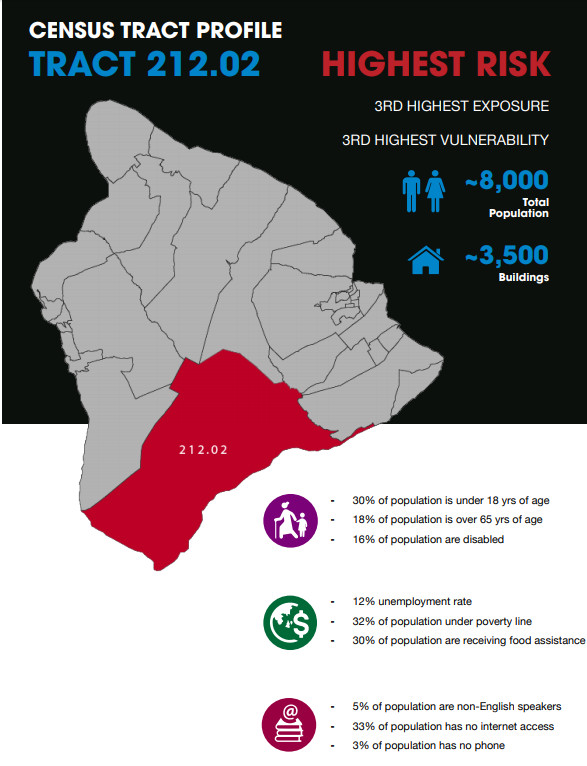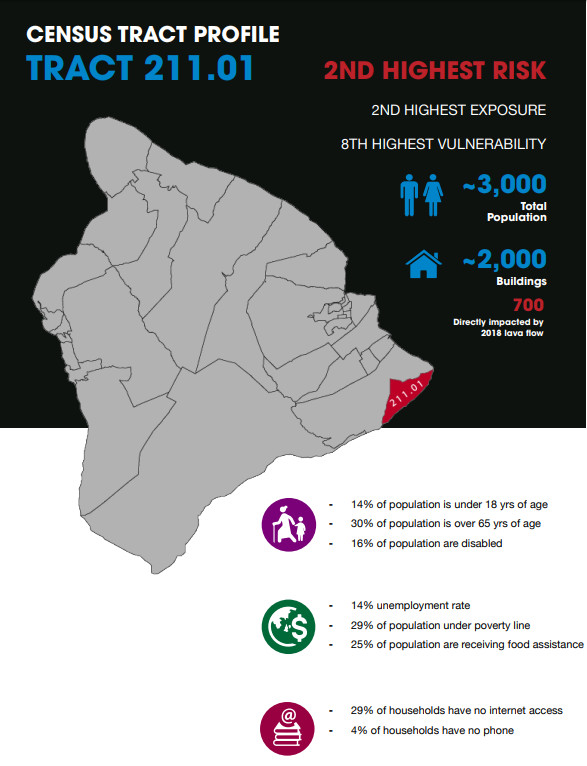(BIVN) – A report that analyzes the risks of communities living on two of Hawai‘i Island’s most active volcanoes has been published after months of delay.
The finished Kīlauea Eruption Risk Assessment, or KERA, was posted to the County’s recovery website, on the same day the Hawaiʻi County Council voted to pass a resolution adopting an interim recovery strategy regarding the 2018 Kīlauea eruption. Resolution 271-19 was previously given a positive recommendation in the council Finance Committee.
The interim strategy “uses information as a tool of empowerment,” commented councilwoman Ashley Kierkiewicz, speaking in favor of the resolution. “I believe this strategy was a driving factor in the publication of the Kīlauea Eruption Risk Assessment that was published to the recovery website today.”
“I encourage everybody to read it,” Kierkiewicz said. “It gives us an opportunity to understand the risks and vulnerabilities associated with living on active volcanoes.”
According to the County of Hawaiʻi, the KERA “was intended to give both county government and residents a clearer understanding of risks relative to volcanic hazards to better inform decision-making moving forward.”
The KERA was originally anticipated to be finished by the spring of 2019. The 36-page assessment was produced in partnership with the Pacific Disaster Center, a Maui-based applied research center managed by the University of Hawaiʻi. The study was completed with in-kind services, at no cost to the county, officials say.
From the County of Hawaiʻi:
The document identifies both volcanic multi-hazard exposure and vulnerabilities – such as access to transportation, socioeconomic status, and household composition – for residents in or around lava zones 1 and 2 on Kīlauea and Mauna Loa.
These factors were then combined to determine the risk in communities defined by U.S. Census blocks and tracts. The top three multi-hazard risk areas were identified as:
1. Census Tract 212.02: Ka‘u.
2. Census Tract 211.01: Kalapana-Kapoho
3. Census Tract 211.06: Pāhoa-Hawaiian Beaches/Shores
The KERA is one of several analyses being considered in development of the forthcoming Kīlauea Recovery Strategic Plan, anticipated by end of year. As part of the planning effort, Tetra Tech, the county’s recovery planning consultant, is taking the PDC analysis to a finer scale when possible based on the latest data available. Their analysis will be folded into the plan and will allow for a more accurate understanding of hazard exposure and the associated risk.
The plan will also include strategies to mitigate hazard risk, reduce vulnerabilities, build complete communities, provide affordable housing, advance economic recovery, and address community needs.Additional findings and opportunities for community input to guide recovery strategies will be presented by the recovery team at the SpeakOut event on Oct. 5 at the Pāhoa High and Intermediate School cafeteria.



by Big Island Video News2:55 pm
on at
STORY SUMMARY
HILO, Hawaiʻi - The long awaited risk assessment was published on the same day the Hawaiʻi County Council adopted the Kīlauea Interim Recovery Strategy.